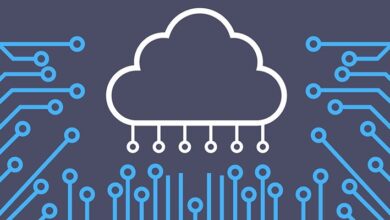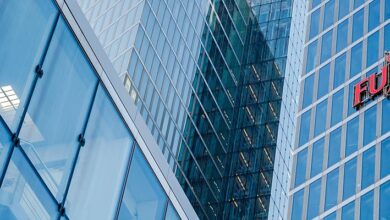AI is meant to free up time and yet somehow… It’s stealing it

Freedom. It’s the word that sparked a revolution of technological innovation, a promise embedded in every breakthrough, especially artificial intelligence (AI). AI was praised as a liberator — a technology that would allow us to “work smarter, not harder.”
We were promised a future where automation would take over tedious, repetitive tasks, freeing us to focus on innovation, creativity, and perhaps even that elusive work-life balance. But as technology integrates deeper into our work lives, the vision of freedom seems to be slipping further away. The promised liberation has transformed into a reality that is starkly different: instead of working less, many are working more, glued to their devices in a relentless cycle of productivity.
Take the recent story of Greptile, where employees were expected to work 84-hour weeks under the guise of staying competitive. This isn’t just a rogue example; it’s symbolic of a broader shift in how AI is reshaping the workplace.
When companies see that AI can function 24/7, that it is constantly analysing, optimising, and predicting, they begin to expect the same from their human employees. Not to mention the AI arms race taking place for VC funding is creating harsh survival demands.
In a world of fierce automation competition many companies are born, but not many of them will survive the race to the top. The result is a culture where the boundaries between work and personal life blur to the point of erasure.
Humans have a specific bandwidth to their productivity; they cannot work day in and day out. To expect human beings to work in a similar manner as machines is not only impossible, it’s simply cruel.
The productivity paradox
On the surface, AI tools are doing what they were designed to do: improving efficiency and optimising workflows. But paradoxically, instead of alleviating workloads, these same efficiencies are driving higher expectations. Consider this: when an algorithm completes a task in seconds, it raises the bar for what human workers are expected to deliver, often without regard for the limitations of the people behind the screen.
This isn’t just a productivity problem. It’s a workplace control problem. Leaders see AI as a tool to extract maximum output, but instead of using it to reduce burdens, they’re leveraging it to justify 24/7 availability. In many companies, metrics powered by AI are being weaponised to track performance down to the minute, with employees judged not only on what they produce but on how “efficiently” they produce it.
If you ask me, that’s just a sly way to prioritise productivity and profit over the people in your company. We all know that humans are incapable of working with the same efficiency of computers. Computers don’t need to sleep for eight hours a day or eat three meals a day.
What’s often framed as a push for excellence is, in reality, a shift in power dynamics. Leaders now wield AI as a mechanism of control, enforcing a digital presence and response rate that leaves little room for downtime. If the data says more can be done, companies demand more—even when the costs to well-being are immense.
The human cost of AI-driven work
The relentless pace set by AI comes at a cost. Burnout, once a term reserved for a select few professions, is now alarmingly common across industries. Employees are stretched thin, constantly on call, and unable to fully disengage from work. The mental toll is immeasurable, but the physical consequences are equally devastating. Chronic stress, fatigue, and even the erosion of personal relationships have become workplace norms in an age that was supposed to free us.
Meanwhile, the promise of work-life balance has turned into little more than a corporate buzzword. The ability to “batch tasks” and “prioritise effectively” is touted as the solution to overwork, yet no one acknowledges the elephant in the room: the systemic expectation of always-on availability driven by AI-powered tools.
Reshaping the future of work
It doesn’t have to be this way. AI isn’t inherently the problem. No, rather it’s how we’re choosing to deploy it. The solution lies in leadership: businesses need to have the courage to resist the urge to exploit AI’s boundless energy and instead focus on creating environments that protect the well-being of their employees.
This means more than offering platitudes or hosting occasional wellness webinars. It requires bold policy changes – enforcing true off-hours, batching notifications, and creating AI tools designed to reduce rather than amplify workloads. Leaders must stop chasing every efficiency AI promises and start asking a different question: How can we use AI to restore balance, not disrupt it further?
As the CEO of a fintech company that uses AI, I’ve seen first hand the incredible potential of this technology. AI has enabled us to enhance accessibility of financial tools, opening up opportunities for everyday investors to access insights that were once reserved for Wall Street elites. But the very same algorithms we use to empower individuals could just as easily be weaponised against them if we don’t remain vigilant.
That’s why I believe we have an ethical obligation to set boundaries. AI should be a force for good, driving not just profit but progress for our companies, our employees, and society as a whole.
The future of work is being decided in real time. If we continue down this path, we risk creating a world where humans are asked to match the pace of machines, and work-life balance becomes a distant memory. But if we step back and reassess, we can chart a different course.
AI doesn’t need sleep… but humans do. It’s time for leaders to remember that productivity is not the ultimate metric of success; humanity is. By leveraging AI responsibly, we can create workplaces where technology enhances our lives instead of consuming them.
Let’s use AI to free our time, not steal it. To build systems that help humanity not further drain an already strained labour system. If we can embrace that mindset, we might just build the future we were promised… and one we actually want to live in.




